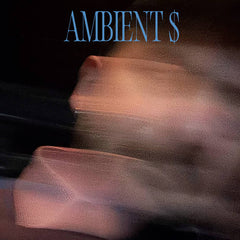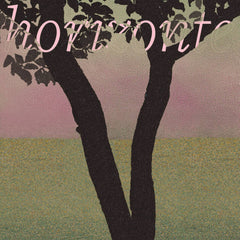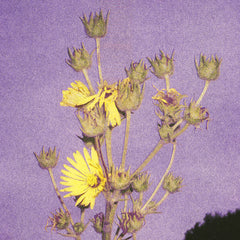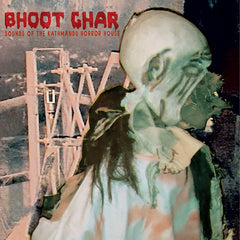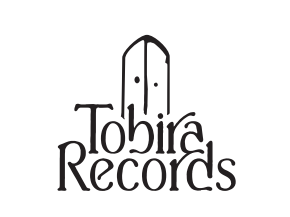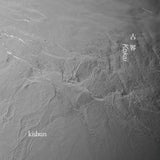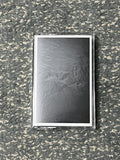クイックビュー
{"id":8967928250618,"title":"Aaron Dilloway \/\/ Bhoot Ghar: Sounds of the Kathmandu Horror House LP","handle":"aaron-dilloway-bhoot-ghar-sounds-of-the-kathmandu-horror-house-lp","description":"\u003ch2\u003e\n\u003cspan style=\"color: rgb(255, 42, 0);\"\u003e※11月上\u003c\/span\u003e\u003cspan style=\"color: rgb(255, 42, 0);\"\u003e旬発送開始します\u003c\/span\u003e\n\u003c\/h2\u003e\n\u003cp\u003eアメリカ・オハイオのノイズレーベルHanson Records主宰Aaron Dillowayが、2025年10月にメイン州のサイケデリックレーベルPsychic Soundsからリリースした再発レコードです。(オリジナルは2023年カセットリリース)\u003c\/p\u003e\n\u003cp\u003eLo-Fiコンクレート3曲を収録。\u003c\/p\u003e\n\u003cp\u003eネパールのB級遊園地カトマンズ・ファンパークにあるお化け屋敷ブート・ガル周辺でのフィールドレコーディング8曲を収録。ホラーが苦手な方はお控えください。\u003c\/p\u003e\n\u003cp\u003e※デジタル音源を無料でお送りいたしますのでお気軽にご連絡くださいませ\u003c\/p\u003e\n\u003cp\u003e以下、作家本人による解説です。\u003c\/p\u003e\n\u003cp\u003e\u003cem\u003e\"ネパール・カトマンズのカトマンズ・ファンパークにあるお化け屋敷からの電話録音。\u003c\/em\u003e\u003c\/p\u003e\n\u003cp\u003e\u003cem\u003e1曲目・エントランスのサウンドトラック: お化け屋敷に入る道を歩くときに流れる音声。屋外の安物のPAスピーカーから流れている。この音声にリミックスはしておらず、エントランスのスピーカーから流れていたものをそのまま録音している。無音の瞬間もあるし、ただ粗雑なスピーカーの音もある。完璧だ。その真ん中にシンセ・トラックがあり、友人のルハイル・カイザーがインドの有名なホラーTV番組のイントロ音楽だと特定した。このコラージュを作った人に会いたいものだ。間違いなくヤラレているのだが、この極めてプロらしくない壊れたPAスピーカーを通して体験できて本当に良かった。\u003c\/em\u003e\u003c\/p\u003e\n\u003cp\u003e\u003cem\u003e2曲目・ウォークスルー2:真っ暗な迷路を歩くのは2度目だ。どこかに人感センサーがあり、それを通り過ぎると、明るい光のフラッシュ、おどろおどろしい爆音、スプレー塗料と汚物にまみれた古い腐ったゴムマスクのついたクソみたいに生々しい錆びた機械が飛び出してくる。地元のネパール人カップルは私たちと一緒に通り抜けたが、私ほど楽しんでいなかった。\u003c\/em\u003e\u003c\/p\u003e\n\u003cp\u003e\u003cem\u003e3曲目・バンパーカー: カトマンズ・ファンパークのバンパーカーの列に並ぶ私のボーナストラック。公園の他の乗り物と同様、この乗り物はあまりに速く、あまりに長く続く。\u003c\/em\u003e\u003c\/p\u003e\n\u003cp\u003e\u003cem\u003e4曲目・ガチョウの餌やり: ブート・ガルの外には、フェンスで囲まれた小さな池があり、10羽ほどのガチョウがいる。ある日、私はたまたまホラーハウスを出た時に、ちょうどガチョウに餌をやっているところだった。ホラーハウス入口のサウンドトラックが鳴り響き、近くではサッカーの試合が実況付きで行われていた。\u003c\/em\u003e\u003c\/p\u003e\n\u003cp\u003e\u003cem\u003e5曲目・ウォークスルー1:ブート・ガルの最初のウォークスルー。壁にぶつかったり、笑ったり。携帯のライトをつけたら、赤と金のホラーな落書きと古ぼけたバスケットが散乱し、埃まみれのエンプリールームだった。\u003c\/em\u003e\u003c\/p\u003e\n\u003cp\u003e\u003cem\u003e6曲目・バンパーカー: もうひとつの機械的カオスの録音。今回はレコーダーも一緒にバンパーカーの中に入っている。この手のものはスピードが速すぎる。\u003c\/em\u003e\u003c\/p\u003e\n\u003cp\u003e\u003cem\u003e7曲目・観覧車のベルト: 観覧車のむき出しのベルトが作る素晴らしいリズム。私が乗った数分後にこのベルトが切れてしまい、その後しばらくの間、人々は頂上で立ち往生していた。\u003c\/em\u003e\u003c\/p\u003e\n\u003cp\u003e\u003cem\u003e8曲目・カセットのみのボーナストラック: 息子と私が乗った 「BREAKDANCER 」は、またしてもスピードが速すぎて...長すぎる。小さな覗き穴のある小さなブースで、小さな男が担当していた。私たちが回転している間、彼は私にウィンクをした。私が気分が悪くなる前にテープは切れてしまったが、私がもううんざりし始めたのが聞こえるだろう...。ライド全体は約8分間続いた。3分後に気分が悪くなった。\" \u003c\/em\u003e\u003c\/p\u003e\n\u003cp\u003e\u003ciframe style=\"border: 0; width: 100%; height: 120px;\" src=\"https:\/\/bandcamp.com\/EmbeddedPlayer\/album=3853494292\/size=large\/bgcol=ffffff\/linkcol=0687f5\/tracklist=false\/artwork=none\/transparent=true\/\"\u003e\u003c\/iframe\u003e\u003c\/p\u003e\n\u003cp\u003e\u003cmeta charset=\"utf-8\"\u003eレーベルその他作品は\u003ca href=\"https:\/\/tobirarecords.com\/collections\/psso\"\u003eこちら\u003c\/a\u003e \/\/\/ Click \u003ca href=\"https:\/\/tobirarecords.com\/collections\/psso\"\u003ehere\u003c\/a\u003e to see more Psychic Sounds releases available at Tobira.\u003c\/p\u003e\n\u003cp\u003e--------------------------------------------\u003c\/p\u003e\n\u003ch3\u003e\u003cspan style=\"color: rgb(255, 42, 0);\"\u003eRELEASE DATE: 31st October 2025\u003c\/span\u003e\u003c\/h3\u003e\n\u003cp\u003eAsk us for digital files. \u003cbr\u003e12\" black vinyl.\u003cbr\u003eEdition of 500. \u003cbr\u003eVinyl reissue - originally released on cassette in 2023. \u003c\/p\u003e\n\u003cp\u003e\u003cstrong\u003eTracklist\u003c\/strong\u003e:\u003c\/p\u003e\n\u003cp class=\"MsoNormal\"\u003e1. Entrance Soundtrack\u003cbr\u003e2. Walk Through 2\u003cbr\u003e\u003cspan style=\"font-family: -apple-system, BlinkMacSystemFont, 'San Francisco', 'Segoe UI', Roboto, 'Helvetica Neue', sans-serif; font-size: 0.875rem;\"\u003e3. Bumper Cars (In Line)\u003cbr\u003e\u003c\/span\u003e\u003cspan style=\"font-family: -apple-system, BlinkMacSystemFont, 'San Francisco', 'Segoe UI', Roboto, 'Helvetica Neue', sans-serif; font-size: 0.875rem;\"\u003e4. Geese Feeding Outside Bhoot Ghar\u003cbr\u003e\u003c\/span\u003e\u003cspan style=\"font-family: -apple-system, BlinkMacSystemFont, 'San Francisco', 'Segoe UI', Roboto, 'Helvetica Neue', sans-serif; font-size: 0.875rem;\"\u003e5. Walk Through 1\u003cbr\u003e\u003c\/span\u003e\u003cspan style=\"font-family: -apple-system, BlinkMacSystemFont, 'San Francisco', 'Segoe UI', Roboto, 'Helvetica Neue', sans-serif; font-size: 0.875rem;\"\u003e6. Bumper Cars (In Car)\u003cbr\u003e\u003c\/span\u003e\u003cspan style=\"font-family: -apple-system, BlinkMacSystemFont, 'San Francisco', 'Segoe UI', Roboto, 'Helvetica Neue', sans-serif; font-size: 0.875rem;\"\u003e7. Ferris Wheel Belt\u003cbr\u003e\u003c\/span\u003e\u003cspan style=\"font-family: -apple-system, BlinkMacSystemFont, 'San Francisco', 'Segoe UI', Roboto, 'Helvetica Neue', sans-serif; font-size: 0.875rem;\"\u003e8. Break Dancer (Vinyl Only)\u003c\/span\u003e\u003c\/p\u003e\n\u003cp\u003ePsychic Sounds:\u003c\/p\u003e\n\u003cp\u003e\"\u003cmeta charset=\"utf-8\"\u003e\u003cem\u003ePsychic Sounds now offers a proper vinyl release of the raw, unfiltered document 'Bhoot Ghar: Sounds of the Kathmandu Horror House', compiled field recordings by Aaron Dilloway. Previous explorations into Nepal have fruited wild \u0026amp; wonderful collections such as 'Sounds of Nepal' featuring field recordings \u0026amp; a regional folk pop songs comp from found cassettes, 'Radio Nepal' transmission snippets dubbed directly from Nepalese radio, and the epic two hour hypnotic alleyway trance 'Sounds of the Indian Snake Charmer' by the Nath Family. This research further fueled subsequent solo works of essential carved noise relics 'Rotting Nepal' \u0026amp; 'Beggar Master'.\u003c\/em\u003e\u003cbr\u003e\u003cbr\u003e\u003cem\u003eBhoot Ghar, or Ghost House in Hindi, apparated into Dilloway’s ongoing narrative revealing crude, rusted animatronics \u0026amp; ghoulish mannequins triggered by sensors releasing bursts of mechanical clanking \u0026amp; electric humming creating chaotic collisions of questionable in-house rigs likened to Survival Research Laboratories. Listeners become the ghost-on-wall witnessing confused, sometimes disturbed, patrons trying to find an exit which all contributes to a disorienting, psychedelic atmosphere. The layered\u003cspan class=\"bcTruncateMore\"\u003e distorted, crackling audio soundtrack sewn from various ancient theme parks, cut-up \"ghost host\" narration, Indian horror tv show music, heavily effected vocals \u0026amp; eerie samples all get funneled through the \"busted sound system\" further adding to the surreal, unnerving experience.\u003cbr\u003e\u003cbr\u003eJourneying through the moldy corridors isn’t the only treat received, as the album also shares other mundane park environments capturing the natural soundscape amidst the manufactured scares revealing his ability to create a sense of presence from ambient sounds outside the dilapidated structure. The flimsy wheel belt rhythms, bumper car madness, or cacophonous feeding geese ground the listener in the reality of the Kathmandu Fun Park, making the eventual descent into the Horror House feel even more immersive, revealing that much of the fright comes from navigating a way out of the decrepit pitch-black wooden maze. And for an extra demented dimension, Aaron \u0026amp; Leo, his son, experience motion sickness after an excessively long ride called “Breakdancer” swirling rhythmic squeaks, groans, and metallic churning in which they apparently catch a wink from the operator while in motion.\u003cbr\u003e\u003cbr\u003eOverall, it fits perfectly into the mass distributed vinyl, cassette \u0026amp; CD culture of commercial Halloween sound effects \u0026amp; spooky music productions heard across the seventies, eighties \u0026amp; nineties, or even if Sublime Frequencies had a haunted house novelty section featuring macabre selections from around the globe. This deluxe edition includes the original Hanson Records cassette bonus material also getting a supreme update with mastered audio along with newly reworked cover artwork, and a full color double sided insert of photos including all the entertaining notes in their fully insane glory. Well worth the price of entry, and for those that dare to grab this version will find a surprise ending of both \"terrifying and hilarious\" proportions!\u003c\/span\u003e \"\u003c\/em\u003e\u003c\/p\u003e\n\u003cp\u003eArtist : Aaron Dilloway\u003c\/p\u003e\n\u003cp\u003eLabel : Psychic Sounds\u003c\/p\u003e\n\u003cp\u003ecat no : \u003cmeta charset=\"utf-8\"\u003e\u003cspan\u003ePS37\u003c\/span\u003e\u003c\/p\u003e","published_at":"2025-10-24T11:08:40+09:00","created_at":"2025-10-24T10:54:25+09:00","vendor":"Tobira Records","type":"","tags":["drone","field recording","lp","monooto","new","noise","psychic sounds"],"price":398000,"price_min":398000,"price_max":398000,"available":true,"price_varies":false,"compare_at_price":null,"compare_at_price_min":0,"compare_at_price_max":0,"compare_at_price_varies":false,"variants":[{"id":47858043486458,"title":"Default Title","option1":"Default Title","option2":null,"option3":null,"sku":null,"requires_shipping":true,"taxable":true,"featured_image":null,"available":true,"name":"Aaron Dilloway \/\/ Bhoot Ghar: Sounds of the Kathmandu Horror House LP","public_title":null,"options":["Default Title"],"price":398000,"weight":430,"compare_at_price":null,"inventory_management":"shopify","barcode":"","requires_selling_plan":false,"selling_plan_allocations":[]}],"images":["\/\/tobirarecords.com\/cdn\/shop\/files\/gha1.jpg?v=1761270674","\/\/tobirarecords.com\/cdn\/shop\/files\/gha3.jpg?v=1761270674","\/\/tobirarecords.com\/cdn\/shop\/files\/gha2.jpg?v=1761270674"],"featured_image":"\/\/tobirarecords.com\/cdn\/shop\/files\/gha1.jpg?v=1761270674","options":["Title"],"media":[{"alt":null,"id":37227600281850,"position":1,"preview_image":{"aspect_ratio":1.0,"height":700,"width":700,"src":"\/\/tobirarecords.com\/cdn\/shop\/files\/gha1.jpg?v=1761270674"},"aspect_ratio":1.0,"height":700,"media_type":"image","src":"\/\/tobirarecords.com\/cdn\/shop\/files\/gha1.jpg?v=1761270674","width":700},{"alt":null,"id":37227600347386,"position":2,"preview_image":{"aspect_ratio":0.981,"height":1200,"width":1177,"src":"\/\/tobirarecords.com\/cdn\/shop\/files\/gha3.jpg?v=1761270674"},"aspect_ratio":0.981,"height":1200,"media_type":"image","src":"\/\/tobirarecords.com\/cdn\/shop\/files\/gha3.jpg?v=1761270674","width":1177},{"alt":null,"id":37227600314618,"position":3,"preview_image":{"aspect_ratio":0.913,"height":1200,"width":1095,"src":"\/\/tobirarecords.com\/cdn\/shop\/files\/gha2.jpg?v=1761270674"},"aspect_ratio":0.913,"height":1200,"media_type":"image","src":"\/\/tobirarecords.com\/cdn\/shop\/files\/gha2.jpg?v=1761270674","width":1095}],"requires_selling_plan":false,"selling_plan_groups":[],"content":"\u003ch2\u003e\n\u003cspan style=\"color: rgb(255, 42, 0);\"\u003e※11月上\u003c\/span\u003e\u003cspan style=\"color: rgb(255, 42, 0);\"\u003e旬発送開始します\u003c\/span\u003e\n\u003c\/h2\u003e\n\u003cp\u003eアメリカ・オハイオのノイズレーベルHanson Records主宰Aaron Dillowayが、2025年10月にメイン州のサイケデリックレーベルPsychic Soundsからリリースした再発レコードです。(オリジナルは2023年カセットリリース)\u003c\/p\u003e\n\u003cp\u003eLo-Fiコンクレート3曲を収録。\u003c\/p\u003e\n\u003cp\u003eネパールのB級遊園地カトマンズ・ファンパークにあるお化け屋敷ブート・ガル周辺でのフィールドレコーディング8曲を収録。ホラーが苦手な方はお控えください。\u003c\/p\u003e\n\u003cp\u003e※デジタル音源を無料でお送りいたしますのでお気軽にご連絡くださいませ\u003c\/p\u003e\n\u003cp\u003e以下、作家本人による解説です。\u003c\/p\u003e\n\u003cp\u003e\u003cem\u003e\"ネパール・カトマンズのカトマンズ・ファンパークにあるお化け屋敷からの電話録音。\u003c\/em\u003e\u003c\/p\u003e\n\u003cp\u003e\u003cem\u003e1曲目・エントランスのサウンドトラック: お化け屋敷に入る道を歩くときに流れる音声。屋外の安物のPAスピーカーから流れている。この音声にリミックスはしておらず、エントランスのスピーカーから流れていたものをそのまま録音している。無音の瞬間もあるし、ただ粗雑なスピーカーの音もある。完璧だ。その真ん中にシンセ・トラックがあり、友人のルハイル・カイザーがインドの有名なホラーTV番組のイントロ音楽だと特定した。このコラージュを作った人に会いたいものだ。間違いなくヤラレているのだが、この極めてプロらしくない壊れたPAスピーカーを通して体験できて本当に良かった。\u003c\/em\u003e\u003c\/p\u003e\n\u003cp\u003e\u003cem\u003e2曲目・ウォークスルー2:真っ暗な迷路を歩くのは2度目だ。どこかに人感センサーがあり、それを通り過ぎると、明るい光のフラッシュ、おどろおどろしい爆音、スプレー塗料と汚物にまみれた古い腐ったゴムマスクのついたクソみたいに生々しい錆びた機械が飛び出してくる。地元のネパール人カップルは私たちと一緒に通り抜けたが、私ほど楽しんでいなかった。\u003c\/em\u003e\u003c\/p\u003e\n\u003cp\u003e\u003cem\u003e3曲目・バンパーカー: カトマンズ・ファンパークのバンパーカーの列に並ぶ私のボーナストラック。公園の他の乗り物と同様、この乗り物はあまりに速く、あまりに長く続く。\u003c\/em\u003e\u003c\/p\u003e\n\u003cp\u003e\u003cem\u003e4曲目・ガチョウの餌やり: ブート・ガルの外には、フェンスで囲まれた小さな池があり、10羽ほどのガチョウがいる。ある日、私はたまたまホラーハウスを出た時に、ちょうどガチョウに餌をやっているところだった。ホラーハウス入口のサウンドトラックが鳴り響き、近くではサッカーの試合が実況付きで行われていた。\u003c\/em\u003e\u003c\/p\u003e\n\u003cp\u003e\u003cem\u003e5曲目・ウォークスルー1:ブート・ガルの最初のウォークスルー。壁にぶつかったり、笑ったり。携帯のライトをつけたら、赤と金のホラーな落書きと古ぼけたバスケットが散乱し、埃まみれのエンプリールームだった。\u003c\/em\u003e\u003c\/p\u003e\n\u003cp\u003e\u003cem\u003e6曲目・バンパーカー: もうひとつの機械的カオスの録音。今回はレコーダーも一緒にバンパーカーの中に入っている。この手のものはスピードが速すぎる。\u003c\/em\u003e\u003c\/p\u003e\n\u003cp\u003e\u003cem\u003e7曲目・観覧車のベルト: 観覧車のむき出しのベルトが作る素晴らしいリズム。私が乗った数分後にこのベルトが切れてしまい、その後しばらくの間、人々は頂上で立ち往生していた。\u003c\/em\u003e\u003c\/p\u003e\n\u003cp\u003e\u003cem\u003e8曲目・カセットのみのボーナストラック: 息子と私が乗った 「BREAKDANCER 」は、またしてもスピードが速すぎて...長すぎる。小さな覗き穴のある小さなブースで、小さな男が担当していた。私たちが回転している間、彼は私にウィンクをした。私が気分が悪くなる前にテープは切れてしまったが、私がもううんざりし始めたのが聞こえるだろう...。ライド全体は約8分間続いた。3分後に気分が悪くなった。\" \u003c\/em\u003e\u003c\/p\u003e\n\u003cp\u003e\u003ciframe style=\"border: 0; width: 100%; height: 120px;\" src=\"https:\/\/bandcamp.com\/EmbeddedPlayer\/album=3853494292\/size=large\/bgcol=ffffff\/linkcol=0687f5\/tracklist=false\/artwork=none\/transparent=true\/\"\u003e\u003c\/iframe\u003e\u003c\/p\u003e\n\u003cp\u003e\u003cmeta charset=\"utf-8\"\u003eレーベルその他作品は\u003ca href=\"https:\/\/tobirarecords.com\/collections\/psso\"\u003eこちら\u003c\/a\u003e \/\/\/ Click \u003ca href=\"https:\/\/tobirarecords.com\/collections\/psso\"\u003ehere\u003c\/a\u003e to see more Psychic Sounds releases available at Tobira.\u003c\/p\u003e\n\u003cp\u003e--------------------------------------------\u003c\/p\u003e\n\u003ch3\u003e\u003cspan style=\"color: rgb(255, 42, 0);\"\u003eRELEASE DATE: 31st October 2025\u003c\/span\u003e\u003c\/h3\u003e\n\u003cp\u003eAsk us for digital files. \u003cbr\u003e12\" black vinyl.\u003cbr\u003eEdition of 500. \u003cbr\u003eVinyl reissue - originally released on cassette in 2023. \u003c\/p\u003e\n\u003cp\u003e\u003cstrong\u003eTracklist\u003c\/strong\u003e:\u003c\/p\u003e\n\u003cp class=\"MsoNormal\"\u003e1. Entrance Soundtrack\u003cbr\u003e2. Walk Through 2\u003cbr\u003e\u003cspan style=\"font-family: -apple-system, BlinkMacSystemFont, 'San Francisco', 'Segoe UI', Roboto, 'Helvetica Neue', sans-serif; font-size: 0.875rem;\"\u003e3. Bumper Cars (In Line)\u003cbr\u003e\u003c\/span\u003e\u003cspan style=\"font-family: -apple-system, BlinkMacSystemFont, 'San Francisco', 'Segoe UI', Roboto, 'Helvetica Neue', sans-serif; font-size: 0.875rem;\"\u003e4. Geese Feeding Outside Bhoot Ghar\u003cbr\u003e\u003c\/span\u003e\u003cspan style=\"font-family: -apple-system, BlinkMacSystemFont, 'San Francisco', 'Segoe UI', Roboto, 'Helvetica Neue', sans-serif; font-size: 0.875rem;\"\u003e5. Walk Through 1\u003cbr\u003e\u003c\/span\u003e\u003cspan style=\"font-family: -apple-system, BlinkMacSystemFont, 'San Francisco', 'Segoe UI', Roboto, 'Helvetica Neue', sans-serif; font-size: 0.875rem;\"\u003e6. Bumper Cars (In Car)\u003cbr\u003e\u003c\/span\u003e\u003cspan style=\"font-family: -apple-system, BlinkMacSystemFont, 'San Francisco', 'Segoe UI', Roboto, 'Helvetica Neue', sans-serif; font-size: 0.875rem;\"\u003e7. Ferris Wheel Belt\u003cbr\u003e\u003c\/span\u003e\u003cspan style=\"font-family: -apple-system, BlinkMacSystemFont, 'San Francisco', 'Segoe UI', Roboto, 'Helvetica Neue', sans-serif; font-size: 0.875rem;\"\u003e8. Break Dancer (Vinyl Only)\u003c\/span\u003e\u003c\/p\u003e\n\u003cp\u003ePsychic Sounds:\u003c\/p\u003e\n\u003cp\u003e\"\u003cmeta charset=\"utf-8\"\u003e\u003cem\u003ePsychic Sounds now offers a proper vinyl release of the raw, unfiltered document 'Bhoot Ghar: Sounds of the Kathmandu Horror House', compiled field recordings by Aaron Dilloway. Previous explorations into Nepal have fruited wild \u0026amp; wonderful collections such as 'Sounds of Nepal' featuring field recordings \u0026amp; a regional folk pop songs comp from found cassettes, 'Radio Nepal' transmission snippets dubbed directly from Nepalese radio, and the epic two hour hypnotic alleyway trance 'Sounds of the Indian Snake Charmer' by the Nath Family. This research further fueled subsequent solo works of essential carved noise relics 'Rotting Nepal' \u0026amp; 'Beggar Master'.\u003c\/em\u003e\u003cbr\u003e\u003cbr\u003e\u003cem\u003eBhoot Ghar, or Ghost House in Hindi, apparated into Dilloway’s ongoing narrative revealing crude, rusted animatronics \u0026amp; ghoulish mannequins triggered by sensors releasing bursts of mechanical clanking \u0026amp; electric humming creating chaotic collisions of questionable in-house rigs likened to Survival Research Laboratories. Listeners become the ghost-on-wall witnessing confused, sometimes disturbed, patrons trying to find an exit which all contributes to a disorienting, psychedelic atmosphere. The layered\u003cspan class=\"bcTruncateMore\"\u003e distorted, crackling audio soundtrack sewn from various ancient theme parks, cut-up \"ghost host\" narration, Indian horror tv show music, heavily effected vocals \u0026amp; eerie samples all get funneled through the \"busted sound system\" further adding to the surreal, unnerving experience.\u003cbr\u003e\u003cbr\u003eJourneying through the moldy corridors isn’t the only treat received, as the album also shares other mundane park environments capturing the natural soundscape amidst the manufactured scares revealing his ability to create a sense of presence from ambient sounds outside the dilapidated structure. The flimsy wheel belt rhythms, bumper car madness, or cacophonous feeding geese ground the listener in the reality of the Kathmandu Fun Park, making the eventual descent into the Horror House feel even more immersive, revealing that much of the fright comes from navigating a way out of the decrepit pitch-black wooden maze. And for an extra demented dimension, Aaron \u0026amp; Leo, his son, experience motion sickness after an excessively long ride called “Breakdancer” swirling rhythmic squeaks, groans, and metallic churning in which they apparently catch a wink from the operator while in motion.\u003cbr\u003e\u003cbr\u003eOverall, it fits perfectly into the mass distributed vinyl, cassette \u0026amp; CD culture of commercial Halloween sound effects \u0026amp; spooky music productions heard across the seventies, eighties \u0026amp; nineties, or even if Sublime Frequencies had a haunted house novelty section featuring macabre selections from around the globe. This deluxe edition includes the original Hanson Records cassette bonus material also getting a supreme update with mastered audio along with newly reworked cover artwork, and a full color double sided insert of photos including all the entertaining notes in their fully insane glory. Well worth the price of entry, and for those that dare to grab this version will find a surprise ending of both \"terrifying and hilarious\" proportions!\u003c\/span\u003e \"\u003c\/em\u003e\u003c\/p\u003e\n\u003cp\u003eArtist : Aaron Dilloway\u003c\/p\u003e\n\u003cp\u003eLabel : Psychic Sounds\u003c\/p\u003e\n\u003cp\u003ecat no : \u003cmeta charset=\"utf-8\"\u003e\u003cspan\u003ePS37\u003c\/span\u003e\u003c\/p\u003e"}
